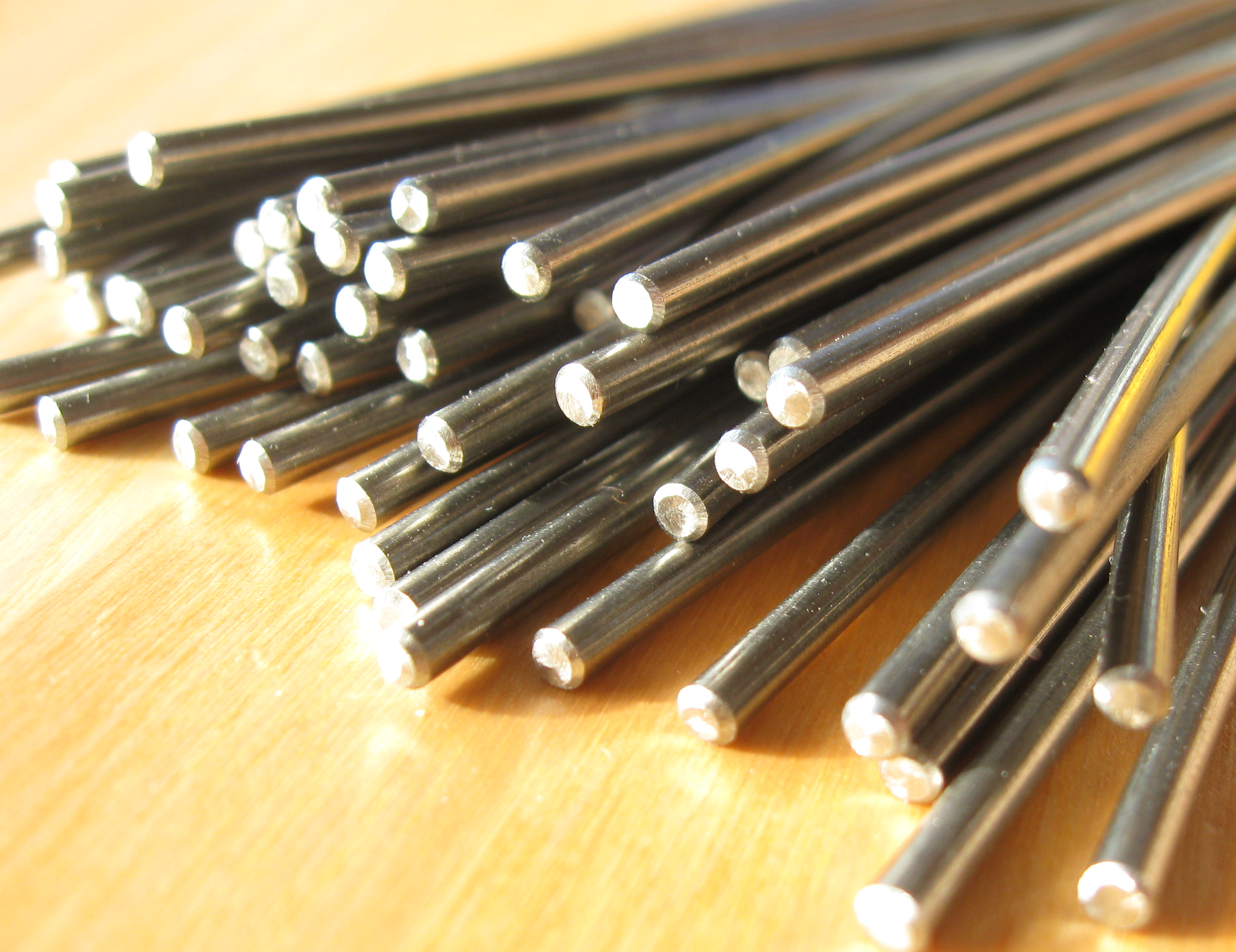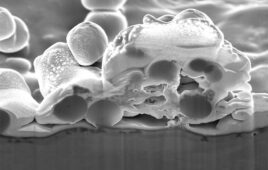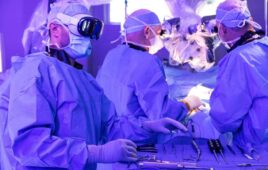Under the most common current practice, the treatment of fibroadenomas of the breast necessitates an incisional biopsy which is sure to leave a scar. Since the tumor is benign, patients can find themselves in a tough spot: invested in removing the fibroadenoma but reluctant to make the choice because of the likely scarring.
With that dilemma in mind, Theraclion is trying to change the treatment equation. The French medical device manufacturer is currently engaged with clinical trials for the Echopulse, a echotherapy option for addressing breast fibroadenomas.
David Brenin, MD, the chief of breast surgery and co-director of the University of Virginia Breast Care Program, is the principal investigator of the U.S. trial for the Echopulse.
“Focused ultrasound ablation is a completely transcutaneous technique,” Brenin explains. “There’s no penetration through the skin into the tumor with a probe or any other break in the skin that occurs at all. An ultrasound transducer generates the energy over a broad surface area and focuses it underneath the skin in an area that’s about 3 mm by 6 mm in height, with the current device. At the focus point of the energy, the tissue is heated up to about 60 degrees celsius, and there’s also a physical disruption that occurs from the sound energy itself.”
Using the device, clinicians develop a treatment plan that assembles multiple sonication zones to cover the full volume of the fibroadenoma. As the tumor is heated by the Echopulse, the necrosis of the cells reduces the size of the tumor. Usually the entire tumor doesn’t go away, but the patient can no longer feel it.
“From a patient experience point of view, it’s a lot less cumbersome than having an operation, even a small operation,” says Brenin.
.jpg)
(Image credit: Theraclion)
For healthcare professionals that employ the Echopulse as a tool, there are additional benefits, driven by the fact that the device is guided by ultrasound rather than magnetic resonance imaging (MRI).
“Obviously, when you’re using MRI guidance, you’re talking about mounting the device in an MR gantry,” Brenin notes. “So you’re really talking about a machine that takes up a room and requires significant resources to purchase, maintain, and operate. When you look at focused ultrasound ablation that’s guided by an ultrasound device, you’re talking about equipment that’s about the size of a washing machine.”
Besides the significant reduction in equipment footprint, Brenin argues that a move to ultrasound technology will broaden the range of healthcare professionals who can comfortably examine the generated information.
“The ultrasound images are familiar to most surgeons and practitioners whereas MR images are typically only familiar to radiologists who do breast MRI, so from a practitioner’s point of view — especially a breast surgeon’s point of view — using ultrasound guidance is definitely more desirable,” he says. “The patient is just in a regular treatment room, the device rolls in, and the practitioner can easily transfer knowledge of standard ultrasound imaging to the images this device obtains before, during, and after treatment.”
The first clinical trial in the United States of the Echopulse took place last summer, treating 20 patients with the device. The data from that research is still being collected and examined. The pivotal trial is currently underway. It will treat 100 patients across the U.S. and Europe, on the way to anticipated FDA clearance for the device.
The Echopulse has already earned the CE mark for treatment of fibroadenomas in Europe.
Although fibroadenomas are now the target, Brenin hopes we’re only at the beginning of a larger shift in treatment approaches.
“Focused ultrasound ablation is a technique that’s been used elsewhere in the body to treat various types of tumors,” Brenin says. “We’re taking baby steps now. We’re starting by treating benign tumors of the breast and we’re hoping that as we gain more experience we can show efficacy to move towards the idea of treating malignant tumors of the breast.”
One thing Brenin is confident about is that patients are going to appreciate the treatment option Echopulse provides.
“Given similar efficacy between a surgical technique and a non-surgical technique, almost no one would choose to have surgery,” says Brenin. “It seems pretty straightforward when you think about it like that.”




